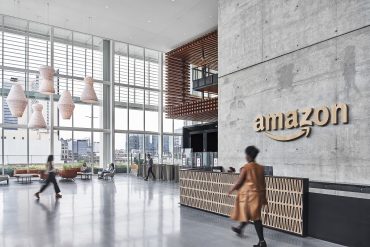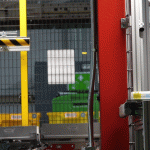

Amazon Prime Day labor shortage prompts corporate employees to fill warehouse roles amid peak grocery delivery demands
Key Takeaways
- Amazon asks corporate employees to volunteer for Prime Day warehouse work with office workers in New York requested to work two-hour shifts picking and packing Amazon Fresh orders during the July 8-11 sales event.
- Nearly 1 million robots now deployed across Amazon fulfillment centers with 75% of global deliveries involving robotic assistance, yet the company still faces labor bottlenecks during peak sales periods.
- Amazon Fresh struggles with profitability challenges as the grocery delivery division has faced significant layoffs since 2022, prompting cost management strategies including corporate volunteer programs.
Introduction
Amazon is mobilizing corporate employees to work warehouse shifts during Prime Day, signaling both operational flexibility and potential labor pressures at the e-commerce giant. The company sent Slack messages to thousands of white-collar employees in New York, including engineers and marketing staff, requesting volunteers for two-hour shifts in Amazon Fresh fulfillment operations.
This initiative occurs as Amazon integrates nearly 1 million robots into its fulfillment network while still requiring human intervention during peak demand periods. The move highlights the company’s strategy to leverage its entire workforce for operational agility during its most critical sales event.
Key Developments
Amazon’s volunteer program targets corporate workers at its New York office for shifts between 10:00 a.m. and 6:00 p.m., Tuesday through Friday, at the Red Hook Brooklyn Amazon Fresh warehouse. Volunteers handle item picking, order preparation, and grocery packing while maintaining their regular work responsibilities through meetings and calls during shifts.
The four-day Prime Day event from July 8-11 represents Amazon’s largest sales period, traditionally requiring thousands of temporary workers. This year’s approach involves salaried employees in fulfillment roles, particularly supporting Amazon Fresh operations where profitability remains challenging.
Amazon spokesperson Griffin Buch emphasizes the voluntary nature of the program, stating it “allows corporate employees to get closer to customers while enabling our store teams to focus on the work that’s most impactful.” The company frames the initiative as fostering cross-functional understanding rather than addressing labor shortages.
Market Impact
The volunteer program reflects Amazon’s broader cost management strategy, particularly within Amazon Fresh operations that have undergone significant restructuring since 2022. By utilizing salaried employees for fulfillment tasks, Amazon potentially reduces overtime and temporary labor expenses during peak periods.
Amazon’s automation investments show substantial progress, with robotic assistance now supporting 75% of global deliveries. Despite this technological advancement, the company continues experiencing labor bottlenecks during major sales events, indicating automation limitations in specialized divisions like grocery delivery.
The initiative coincides with Amazon Fresh promotional strategies, including Prime Day discounts and free delivery trial offers designed to increase grocery order volumes in key markets like New York.
Strategic Insights
Amazon’s approach demonstrates the limitations of warehouse automation during peak demand periods. While the company operates nearly 1 million robots across fulfillment centers, human labor remains essential for handling surge capacity, particularly in complex operations like grocery fulfillment.
The program reveals strategic challenges within Amazon Fresh, which has struggled with profitability and workforce reductions since 2022. Using corporate volunteers represents a cost-effective alternative to traditional temporary hiring while potentially improving decision-maker visibility into operational challenges.
This cross-functional deployment strategy may become a model for other technology companies seeking operational flexibility without permanent workforce expansion. The approach balances cost management with internal culture-building during critical business periods.
Expert Opinions and Data
Griffin Buch, Amazon spokesperson, positions the volunteer program as an opportunity for corporate-warehouse collaboration rather than a response to labor constraints. According to Fortune, the company sent Monday Slack messages seeking volunteers to “help us out with Prime Day to deliver to customers on our biggest days yet.”
Industry observers note mixed reactions to the initiative. Some view it as genuine effort to build empathy between corporate and frontline teams, while others interpret it as indication of labor pressures or cost management priorities given recent layoffs and documented warehouse working conditions.
US Occupational Safety and Health Administration reports highlight ongoing challenges, with Amazon warehouse workers experiencing higher injury rates than industry counterparts. These safety concerns add context to the volunteer program’s implementation and potential worker reception.
Conclusion
Amazon’s corporate volunteer program represents a multifaceted strategy combining operational agility, cost management, and internal culture development during Prime Day. The initiative demonstrates both the company’s workforce flexibility and the persistent limitations of warehouse automation during peak demand periods.
The program particularly addresses Amazon Fresh operational challenges while potentially improving cross-functional understanding between corporate decision-makers and fulfillment teams. This approach may signal broader industry trends toward flexible workforce deployment during critical business periods.








